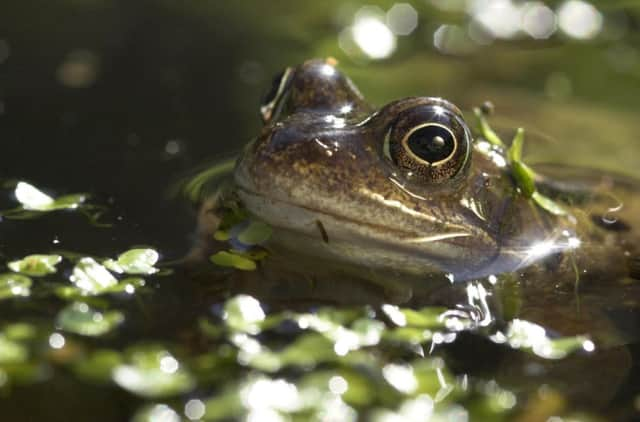Nature at risk from our wild weather


An annual round-up of the year in nature revealed the radically differing fortunes of animals and plants in the countryside and on the coast following stormy winter at beginning of the 2014 to a glorious June and a very wet August and one of the driest Septembers on record.
The National Trust claimed increasingly extreme weather brought by a changing climate combined with a loss of habitat means the UK’s plants and animals are facing a challenging future - and this year could be part of a longer-term trend.
Advertisement
Hide AdAdvertisement
Hide AdThe trust’s nature and wildlife specialist, Matthew Oates, said: “The greatest challenge for wildlife this year, and perhaps a sign of things to come, was the extreme weather. This, combined with the loss of habitat, means that nature is in for a bumpy ride in the years ahead as shown by the rollercoaster that many species endured in 2014.
“This was a remarkable year for much of our wildlife, with many extreme highs and lows. Some species fared exceptionally well, others very poorly, with many faring differently from region to region.”
He added: “We remain worried about the long-term trends which show enormous pressure on species and habitats.”
The trust labelled 2014 the “year of the biting fly”, with horseflies and mosquitoes benefiting from the warm and often wet summer, while slugs, swallows and house martins, and frogs and toads all did well.
Advertisement
Hide AdAdvertisement
Hide AdA raft of migrant species also thrived, such as bee-eaters, exotic birds from southern Europe which nested successfully on the Isle of Wight. But veteran trees were damaged by the storms that raged across the UK at the beginning of the year, while purple emperor and purple hairstreak butterflies did badly.
In good news for picnickers, though, common wasps also had a poor year across much of southern England. Little terns along the Norfolk coast at Blakeney were forced to nest in low-lying areas after tidal surges changed the profile of the beach and were then hit by high tides in mid-June which flooded their nests and led to a very poor breeding season.
Other seabirds managed to recover from the winter storms to have successful breeding seasons, including shags on the Farne Islands where there was a 37 per cent increase on last year’s numbers as a result of a mild summer and plenty of available food.
The mild weather in winter and spring saw insects and spring plants such as snowdrops emerging early, red squirrels mating early and the earliest record of wild bats born in the UK. But by September, the driest on record and one of the warmest, trees were dropping their leaves early and there was an abundance of autumn nuts, seeds and berries.